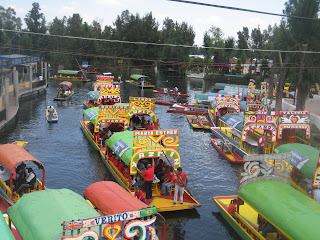(1) Two speakers that had worked previously at CGE shared their personal past histories. They were very painful not only to hear, but to have known they had experienced and survived.
Presently both women are largely involved in Base Christian Communities that practice liberal theology. The BCC strongly focuses on acts of services, and how to aid the communities in which the resident reside. Each woman shared how they received education, participated in marches, cleaned neighborhoods, and advocated for transportation through their BCC. In a way, BCC is akin to community organization projects that many social workers partake in.
.jpg)
Listening to Speakers
(2) We visited a school that was created fifteen years ago out of the need and interest for the community to have a kindergarten and preschool for the children, as many parents did not want to send their children to a public school (or, school at all).
Since the school started, they now have expanded up to grade three, and hope to add a new grade every summer up until grade six. Four students are now in Universidad (University) since the school has been implemented. Before, few kids made it past third grade.
My host Mom works at this school and I had the opportunity to spend a few hours there in the morning before the rest of the students came. Many Mexican schools do not provide breakfast, but this school in particular does as many students would otherwise not have a balanced, nutritious meal.
Another way that the school is unique, is that it emphasizes the whole person. The school educates the students not only in classes such as Math, English as a second language, Spanish, science, etc. but tried to instill morals and values, emphasizing how to share, care, and get along with others.
This week has been valuable as social workers, because we have seen and learned how individuals have come together to form groups and organize in response to community needs. It’s important to talk to the people within the community to learn what the individuals´ needs are, and then use that information to organize.

 ................
................  ...........
........... ..............
..............






















